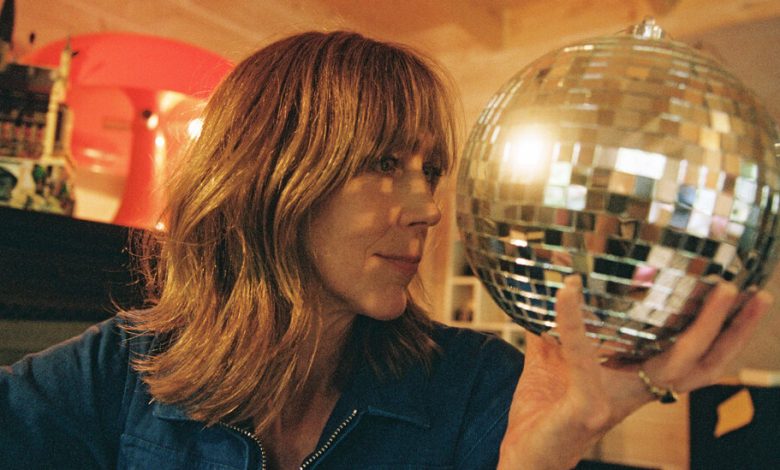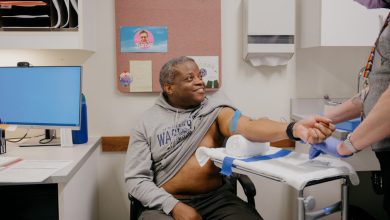How a Sooty Old Piano Helped Beth Orton Reach a New Creative Peak

Maybe the soot helped.
The English songwriter Beth Orton wasn’t sure she even wanted to make another album when she started to write the songs for “Weather Alive”: her eighth studio album, her first since 2016, and by far her best. It’s an album that sums up and transcends all the crosscurrents of Orton’s decidedly unorthodox artistic path.
“It’s been so many phases and changes, and trying to find my place within my own music, within my own voice and in my own sound,” she said in a video interview. “Who am I in what I do?”
On her recordings, Orton, 51, is pensive and measured. In conversation, she is nearly the opposite: voluble and forthcoming, with her thoughts tumbling out.
Orton’s main instrument is the guitar; she’s a skillful, sophisticated fingerpicker. But soon after she moved to her current house in London with her husband, the musician Sam Amidon, she happened upon a used-piano dealer at Camden Market. She was so taken with the haunted sound of an old upright that she bought it for 300 pounds, about $350. The lines she found herself playing on that piano — brief, circular, quietly tolling — led her to build songs around them.
“I was like, ‘OK, I don’t know how to play this instrument, but wow, it just sounds so beautiful,’” Orton said. “So I started on the piano, just writing simple songs, not worrying about being good at what I do.”
Speaking from her home studio in London, a converted garden shed, she turned to that instrument to play a few plangent clusters of notes. “No matter where you touch it, it just has these resonances,” she said. “Little ghosts of other chords just keep ringing out and you’re like, ‘Oh, that speaks of another melody, and that speaks of another feeling.’”
“Johnny Marr,” she added, referring to the Smiths guitarist, “said that each instrument has its many songs, and it’s true — they all seem to hold their secrets.”
About halfway through recording the album, Orton decided to have the piano restored. “It was a terrible idea,” she said, laughing. “They opened it up, it took a while to settle, and they just found it was full of soot.”
For Orton, even that was evocative. “It was like old, old fire.”
“Weather Alive” is an album of meditative grace and constant questioning, of elaborate constructions and startling intimacy. In a way, it’s a British, more pensive analogue to Taylor Swift’s albums “Folklore” and “Evermore,” which also rely on brief piano lines. On Orton’s album, acoustic instruments hover in electronic spaces; mantra-like piano motifs promise stability. Yet Orton’s voice fearlessly tests itself. She’s never afraid to sound broken. Her voice trembles and catches, scrapes and cracks, smears some words and obsessively repeats others as she conjures elusive but intense emotions.
“This is someone who is very deeply mining their inner self, without a great deal of a filter or artifice or a desire to be manicured in some way, to hide oneself from the world,” said Shahzad Ismaily, who played guitar and keyboards on the album. “She was having none of that.”
Orton said she thinks she’s become less afraid. “This is how I sing. This is my voice now,” she said. “This is who I am and this is what life has made of me. And it may be something else next week, or next month, or next year.”
In the album’s eight leisurely songs, Orton sings about longings, memories, nature, attachments and separations, about overwhelming sensations and uncertain prospects. She’s equally prepared for bliss or disillusionment. In “Lonely,” she reflects that “Lonely loves my company,” and wonders, “Will you be the ash of a well-tended fire/Will you be the ambush of my desire?”
Orton’s first recordings — with the producer William Orbit and with the Chemical Brothers — floated her vocals amid electronic loops. But Orton was never a dance-pop top-liner. Her smoky, plaintive voice, her intricate guitar picking and her modal melodies harked back to British folk roots, while her lyrics grappled with tangled, unresolved relationships.
Orton studied and performed with two of her avowed influences — the guitarist Bert Jansch, a founder of the jazzy folk group Pentangle, and the folk-soul songwriter Terry Callier — and she made albums that continually rebalanced elements of folk, jazz, soul, trip-hop and electronics. Her 1999 album, “Central Reservation,” won her a Brit Award as best British female solo artist.
But Orton struggled with the demands of performing and touring. In her early years on the road, she said, “I would go out and, like, roll with it, or get drunk enough, or just get stoned enough, or get revved up enough to get up there and do what I do on pure nerves. I think people loved it. But it was hard to live with.”
That excess couldn’t last. Orton soldiered through medical problems until 2006, when she had her first child, Nancy; her second, Arthur, was born in 2011. Raising small children kept her largely at home, where she expanded her abilities in electronics and production; her 2016 album, “Kidsticks,” was built on computerized elements that she could record in the moments between caring for her children. For “Weather Alive,” she had more free time since both children were old enough to go to school.
She still wasn’t sure she wanted to be a touring singer-songwriter anymore. In London, she participated in a National Theater workshop on writing musicals, with mentors including Stephen Sondheim. But the old upright piano brought her back to the craft of songwriting.
“With my kids at school I was able to go deep again,” she said. “What I couldn’t do when the kids were little was really dig into the internal workings, like I like to. So I was left again with this sort of meditative quality, or maybe for the first time seeing my own thought patterns. Because I was writing for no one.”
The album often sounds as if all the musicians are quietly huddled together, listening intently to one another, whispering ideas. But that’s an illusion that Orton created as producer and engineer. Like many pandemic-era albums, much of “Weather Alive” was recorded at widely separated times and places.
Orton tried, at first, to record the songs entirely on her own. “I had many iterations and inventions of like creating my own drum kits out of cardboard boxes and tambourines, just fooling around and then making loops,” she said. “But I had to put it aside because I knew, at some point, that I was going to make a piano record.”
The sound of “Weather Alive” began with in-person London sessions with the jazz-rooted rhythm section of Tom Skinner (Sons of Kemet, the Smile) on drums and Tom Herbert (the Invisible, Polar Bear) on bass. Orton sent songs-in-progress to Ismaily and to the saxophonist Alabaster DePlume, then reworked them around what came back. An idea briefly improvised during an outro could be turned into a loop and reshape an entire song.
Ismaily recorded his parts remotely, exchanging hundreds of takes with Orton. “There were a few tracks where I received vocals that were just sounds without the lyrics written yet, so she might just be humming a melody,” he said in a telephone interview. “But even then, you felt pulled into what the world was that you were occupying. She was continuing to discover what the song itself was all the way to the end, which is beautiful.”
Orton said the album “just took on its own life and I was the doula. It was on the one hand sculpting and having as much control as it was possible to have, and on the other, let’s just birth this!”
It was as if, she added, “the record became its own kind of weather.”



